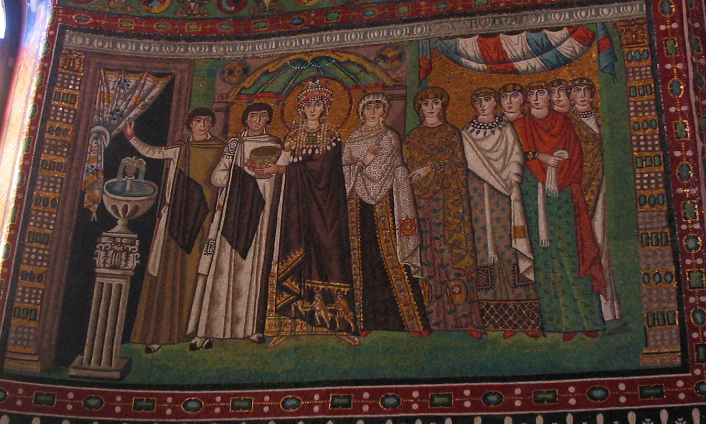The Late Roman and Early Medieval Periods (476-768 AD)
1/17
Earn XP
Description and Tags
From the fall of the Western Roman Empire to Charlemagne
Name | Mastery | Learn | Test | Matching | Spaced |
|---|
No study sessions yet.
18 Terms
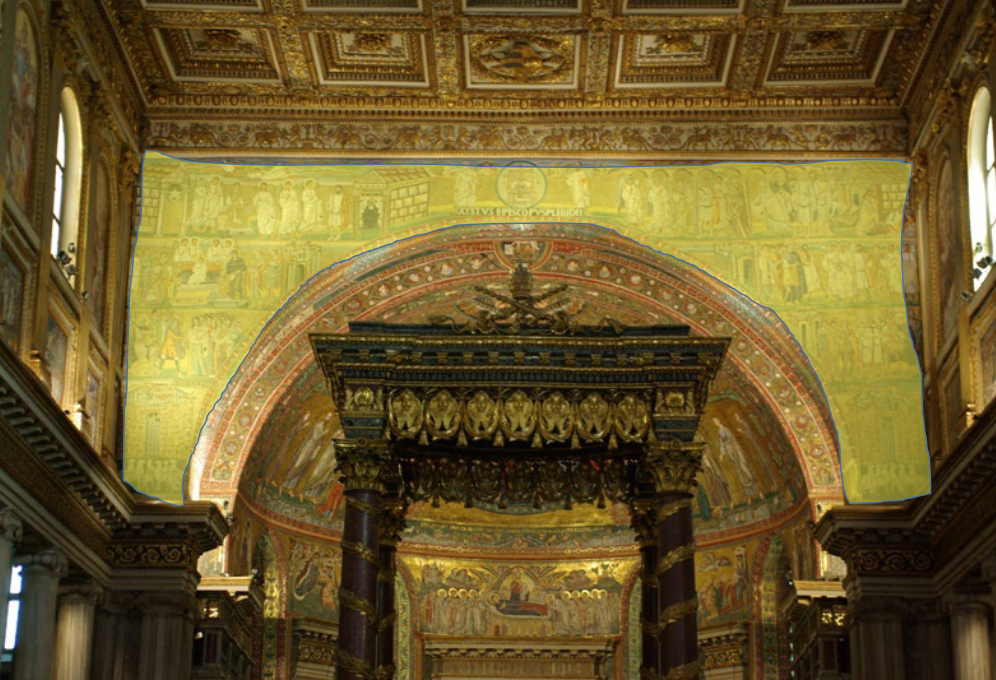
triumphal arch (in Christian churches)
the chancel arch surrounding the apse
Chronology
476 AD: Odoacer (chieftain of a Germanic tribe) deposed Romulus Augustus - ending the western Roman Empire
493-526 AD: Theoderic killed Odacer at banquet celebrating their joint rule
527-565 AD: Justinian (rules in Constantinople, where Empire has not collapsed)
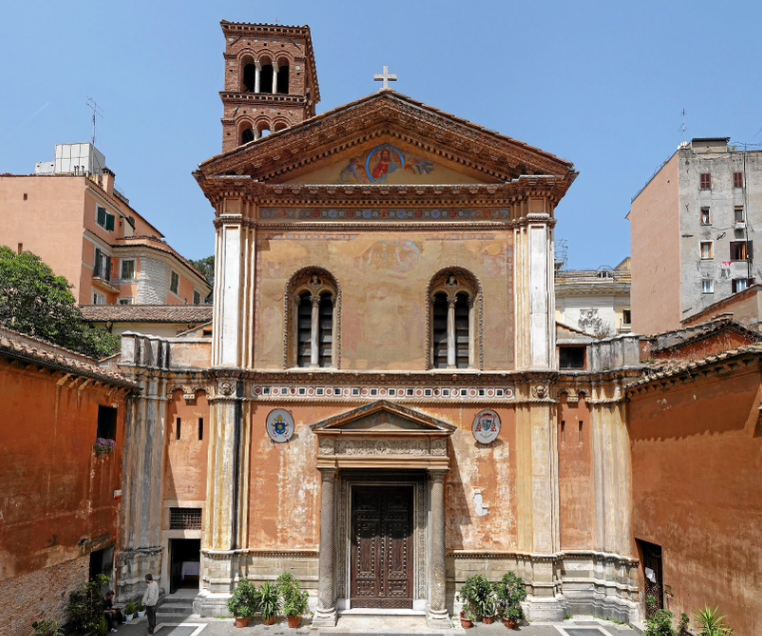
Basilica of Santa Pudenziana, Rome, 384 AD
converted by St. Peter in 1st century
significantly remodeled in 4th century
oldest Christian Church in all of Rome - said to be built over the house St. Peter lived in for 7 years
apse mosaic is oldest in Christian Roman Churches
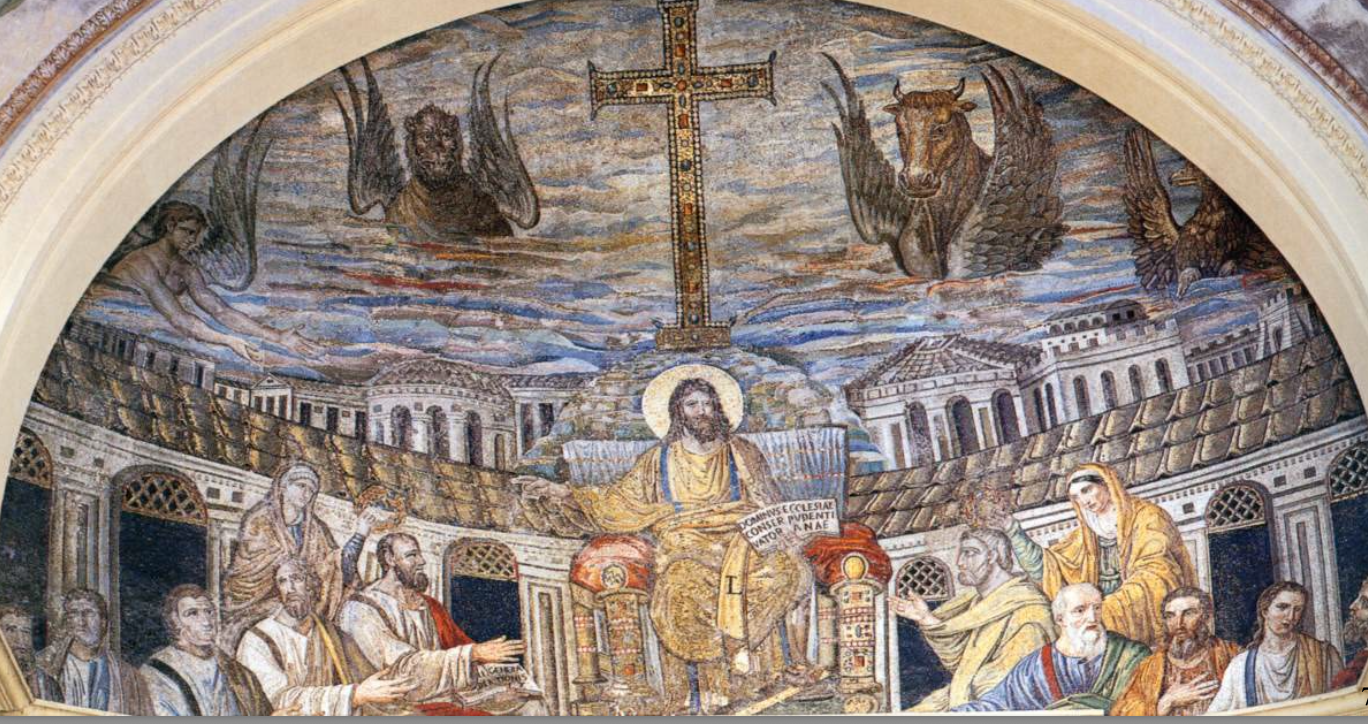
Apse Mosaic of Santa Pudenziana (410-417 AD)
celebrates that it was not destroyed in the sack of 410 AD (inscription suggests Christ protected the Church)
Christ wears empirical robes + poses like a philosopher
each Apostle is unique
symbols of the 4 Evangelists
winged man = Matthew
winged lion = Mark
winged bull = Luke
eagle = John
Santa Maria Maggiore (434 AD… still Imperial)
1st church dedicated to Mary :)
Largest papal church
Designed to be a station church
Patron: Pope Sixtus III
original was destroyed in sack of 410
hypothetical atrium
nave
deambulatory - or…it is likely that the apse was the outer wall of the Church
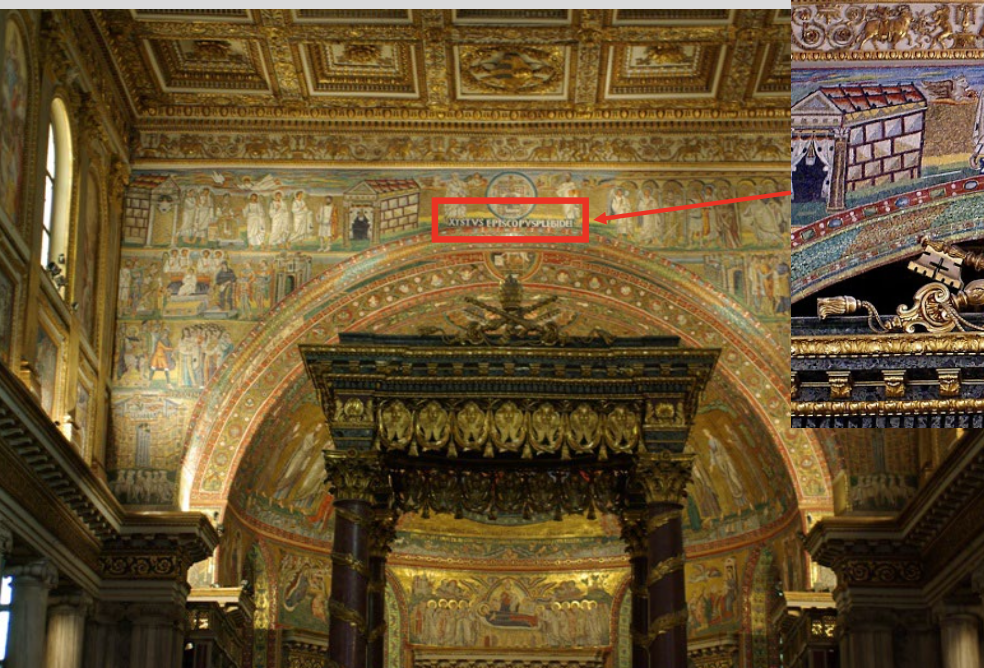
Triumphal Arch Mosaic of Santa Maria Maggiore (434 AD)
allusion to 2nd coming of Jesus
empty throne, prepared (hetoimasia)
Chi-Rho
compare to the column of Trajan from 113 AD
Left = Annunication
Mary like empress
Gabriel like a winged victory
Halos on angels
St. Joseph looks surprised (emotion!)
Sybil fo Cuma (pagan art)
holy innocents - Herod has a halo
Right = Appearance of Lord to Hebrew People
presentation
flight into Egypt can be compared to the adventus of Hadrian
Magi and herod
Walls of Jeweled cities (Bethlehem and Jerusalem
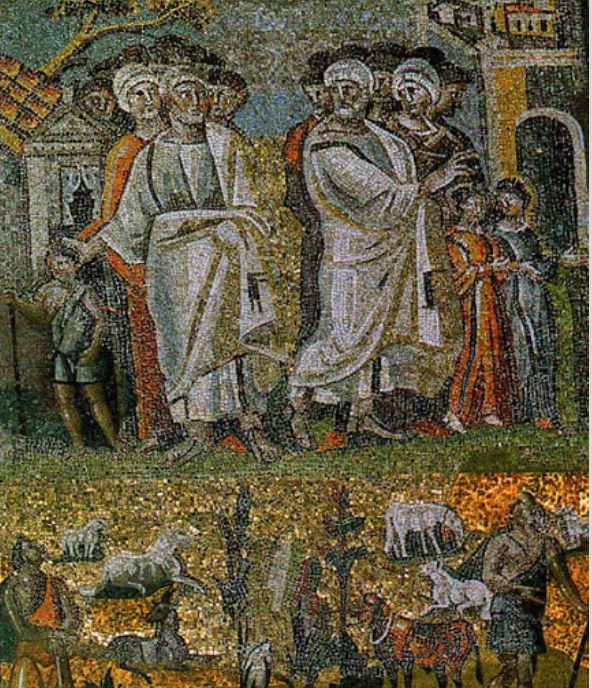
The Nave Mosaics in Santa Maria Maggiore are…
…the only ones we have from this time and place.
Ex. The Parting of Abraham and Lot to Sodom and Canaan (434)
Redemption in the Old Testament fulfilled in triumphal arch with Christ
hetoimasia
“prepared throne”
Chi-Rho (XP)
early Christian symbol containing the 1st two letters of the name Christos written in ancient Greek
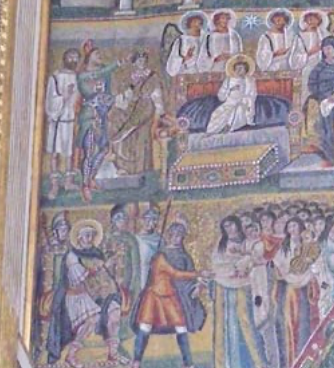
Sybil of Cuma
an ancient mythical figure with prophetic powers cited by Virgil in the fourth Eclogue
adventus
arrival
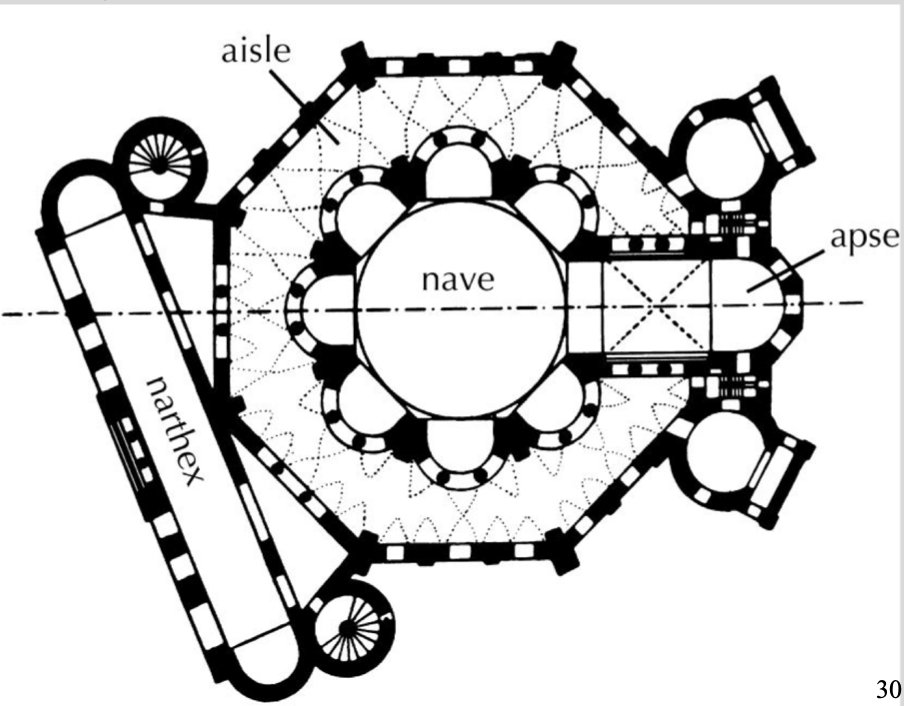
centrally-planned basilica (Greek cross Church)
church in which the parts of structure are of equal or almost equal dimensions around center
Byzantine style
stiff with very little movement; frontal; on gold background
The Middle Ages / Medieval Period
begins after the fall of West Roman Empire
So-called “Dark Age”
Christianity flourished in Europe
Roman Empire slowly fragments into smaller political entities
Visual arts prosper - has its own aesthetic value
Not a lot of artists are named
Name the 5 Stages of art in the Middle Ages …
Early Medieval (500-768)
Carolingian (768-877)
Ottonian (919-1024) did not really occur in ItalyRomanesque (1050-1200)
Gothic (1200-1400)
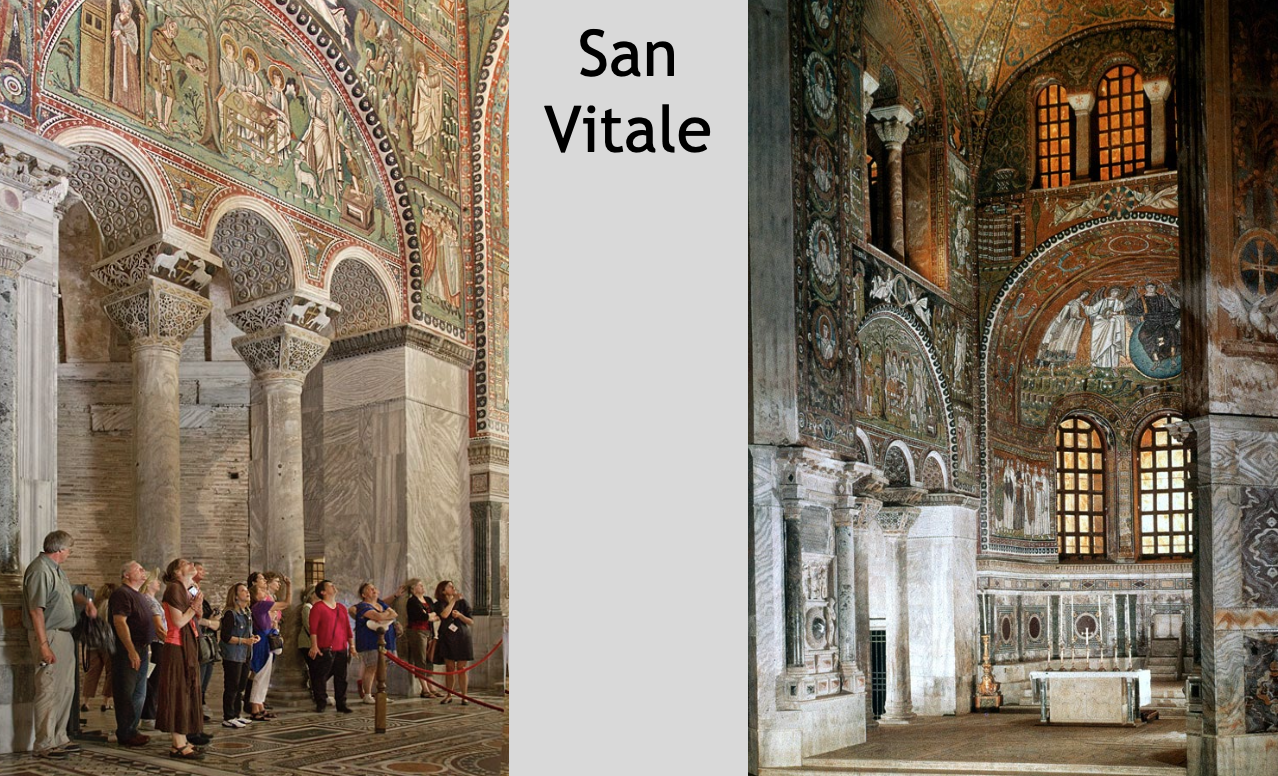
San Vitale (Ravenna) 547 AD
dedicated under Justinian (ruling from Constantinople)
he wanted a foothold in Italy without actually going there
centrally-planned basilica
gold-backed mosaics
elaborate mosaic floors
apse mosaic of Christ
mosaic of Justinian and Theodora
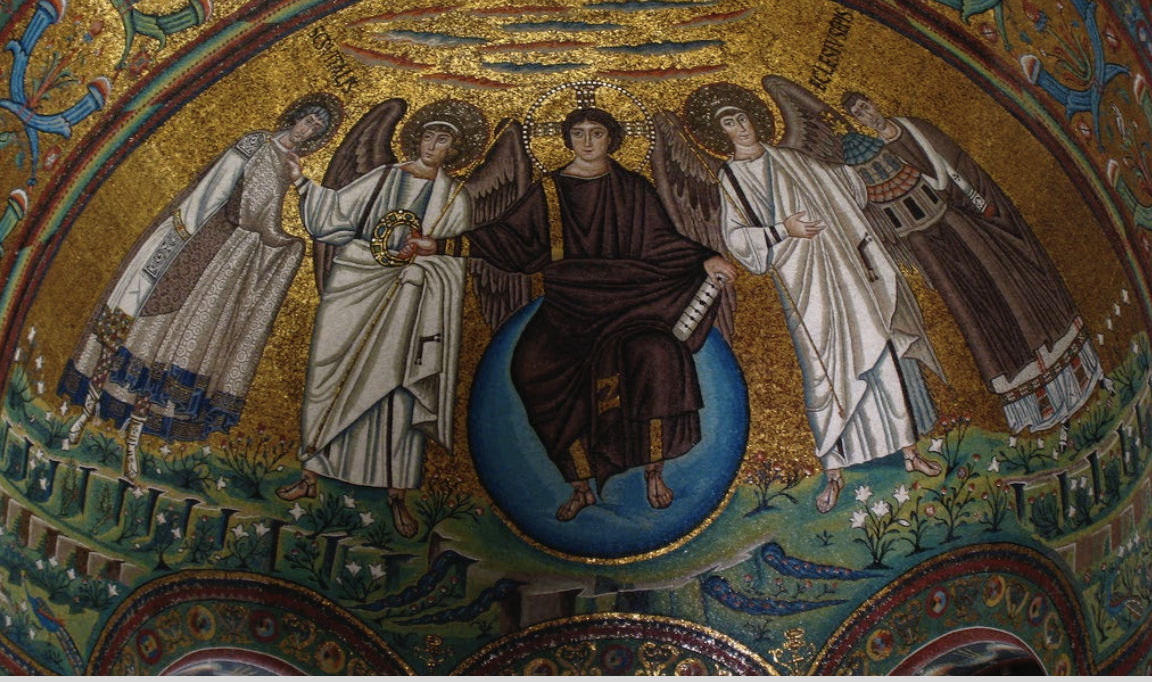
Mosaic of Christ in the Apse of San Vitale
youthful Christ
holds a scroll
sits on the orb of the world with 4 rivers
royal clothing
large halo and three bars (Trinity/Cross)
bishop holds model of Church of San Vitale and gives it to Christ
stiff figures floating on a golden background
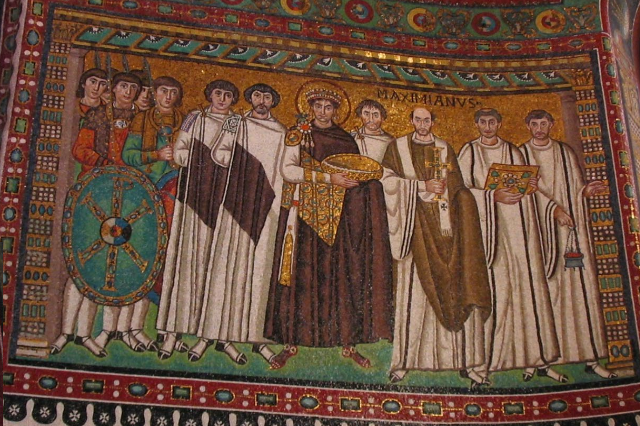
Mosaics of Justinian and Theodora (AD 527-565)
both wear royal purple
both have halos - rulers
unclear whether Justinian or the bishop is at the front
Chi-Rho symbol on shields of the Royal Guard
Theodora is of elevated status (she is important enough to be included)
